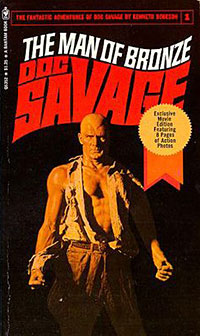 As a follow-up to my “What is pulp?” posting, I’d like to look at what formats people like to get their pulp fiction.
As a follow-up to my “What is pulp?” posting, I’d like to look at what formats people like to get their pulp fiction.
When I got into pulp, you basically had two choices: the original pulp magazines or book reprints (usually paperbacks). In fact, many people probably were reading pulp fiction without realizing it, because they were reading reprints of science fiction, fantasy, detective, mystery, westerns and other stories that originally appeared in the pulp magazines.
Today, people have a variety of formats they can get their pulp fiction in. Depending on your individual tastes, you can get:
- Original pulp magazines
- Pulp reprints (either paperback or hardback)
- Pulp facsimiles
- Electronic
- Audio
There are many people who collect original pulp magazines. They get the original artwork (both interior and exterior), the ads and letter pages, and all the other fiction that was in the original magazine, not just the main story. But there are problems with originals: not just their cost, but storage of what are fragile magazines. You have to be careful in handling them. This makes it difficult for those wanting to just read the stories. I have but a few originals.
Pulp reprints in various formats have been around for years, even going back to the original pulps when stories and novels would be reprinted in book format. Certain authors were kept in print for decades by various publishers. And Bantam’s reprinting of Doc Savage kicked off an explosion of pulp hero reprints.
Today, thanks in large part to Print on Demand, several small presses are doing a great job of reprinting pulps in relatively inexpensive, but high quality, paperbacks. For me, the “gold standards” of this are Sanctum Books and Altus Press. They provide well-designed books with the original stories re-typeset, with the cover and interior art included, and great accompanying articles. But there are others doing reprint work as well, including Black Dog, Black Coat, Adventure House, Wildside, Pulpville, and many others.
A recent phenomenon is that of the pulp replica, where full, reprinted replicas of original pulp magazines are produced. These replicas give you the original artwork and story as if they were the original magazine, though with better paper stock, obviously. This is a great alternate to those wanting the original magazine. For myself, I prefer pulp reprints over replicas. Cost is a big factor, as for the same price of one pulp replica (usually around $35), I can get a pulp reprint that will have three to five novels in it. Adventure House and Girasol seem to be the leaders in this area, putting out several new pulp replicas each month.
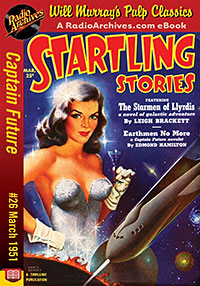 Another emerging trend is electronic publishing. This can be in the form of a PDF file of pulp stories, or it can be in the form of the various other formats for various e-readers (Kindle, Nook, etc.). Vintage Library probably was one of the first to start doing this, but others have jumped on the band wagon, such as Radio Archives. Several New Pulp publishers, along with some reprinters, now offer electronic versions of much of their works. This can be a good alternate for those with a limited budget and space.
Another emerging trend is electronic publishing. This can be in the form of a PDF file of pulp stories, or it can be in the form of the various other formats for various e-readers (Kindle, Nook, etc.). Vintage Library probably was one of the first to start doing this, but others have jumped on the band wagon, such as Radio Archives. Several New Pulp publishers, along with some reprinters, now offer electronic versions of much of their works. This can be a good alternate for those with a limited budget and space.
Audio books have been around a while, but not so much in the pulp world. I think this is just slowly starting, because there is a cost in having someone recorded reading the work. So not sure where this might go. Radio Archives and Audible seem to be the only companies I know who are working in this area.
So there are your pulp fiction reading choices. What are your preferences?

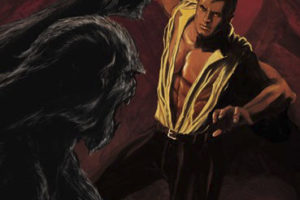
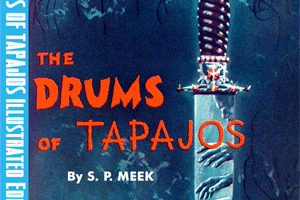
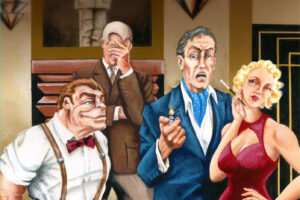
Electronic for me. I’m much more interested in the story than the delivery system.
I have a small place with already too many books, so I’ve been going more and more digital. Having a long commute every day, I also appreciate audiobooks. Sometimes I will get a token original pulp. For instance I’m a big Race Williams fan and have many of Daly’s stories in ebook form, a couple in printed compilations, and then one original pulp of Dime Detective.
Overall my goto is digital, but will go with printed when there isn’t an alternative. Comics I can only read in print. Can’t deal with digital comics at all.
Anyway I can get it. Original mags, scans, reprints, ebooks, audio books, whatever is the easiest to get. I prefer electronic though, just for instant availability.
I’m with you, Jason. I prefer the electronic version for portability and ease of use. But for the books or collections I really like, it’s printed versions. I certainly don’t buy as many actual pulps as I once did. The availability of reprints and replicas (print and digital) has really grown in recent years.
I haven’t joined the electronic age yet (G). I still prefer print, but it doesn’t have to be the original pulp. I do prefer the full text, however. Maybe of the paperback reprints were cut and edited. I also enjoy the original illustrations, but they can be in facsimiles or replicas. The main thing is the story.
Like Tom, I am still holding out on the e-books. It has to be portable, but before I buy a tablet, it has to have a 7″x10″ display (same size as a comic book page). If I get digital comics, I don’t want to have to scroll, pinch & zoom (that’s more work than it’s worth). But someday, yeah, when I find the perfect tablet. Can’t stand to sit and read e-books on a desktop monitor.
I began with mass-market paperbacks in the 1970s. I realized from the copyright indicia page that the Isaac Asimov and Ray Bradbury stories I was reading came from old SF magazines, even if I wasn’t quite sure what a pulp was. Then I got into ERB, then The Shadow, Doc Savage, and The Avenger. By now I had read Steranko’s History of Comics (the chapter on pulps is the greatest concise history of the subject, ever). Steranko, by the way, should win some sort of award for championing the pulps – I believe he’s done more to help promote them to people younger than himself than nearly anyone.
Even though I love the original pulp covers, I have to admit that the paperback cover artists of the mass-market 60s/70s/80s era are probably responsible for selling more pulp reprints than anyone else. Look at the lineup – Frazetta, Boris Vallejo, and Neal Adams on ERB reprints, Bama and Larkin on Doc, Steranko on The Shadow and G-8, Peter Caras on The Avenger, David Mattingly on Doc’s Smith’s Lensman series. Those are all superb covers, and I enjoy collecting JPEGs of all those covers and looking at them every now and again. I do believe The Spider would have been successful if they’d found a great artist to give him a distinctive look (with the fangs and the white fright wig). Unfortunately Peter Caras struck out on this one with his first couple of tries at bat for the Berkeley.
Nowadays it’s still all reprints, in whatever format is available – replicas from Adventure House, ‘pulp doubles’ from Girasol and Sanctum, anthologies from Altus Press, even the audiobook versions from Radio Archives (gotta multitask during that daily commuting time). I have never owned an original pulp, and would probably be afraid to read it for fear of damaging the thing, due to its age and fragility. My thanks go out to the people that DID save them, back in the early days, thus preserving them for future generations to enjoy in reprint form.